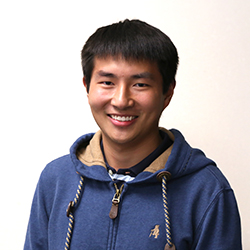Opinion: The future of Chinese-American relations

September 30, 2013
Haoran Li
Haoran Li is a sophomore communication studies major and a columnist for the Daily Kent Stater. He can be reached at [email protected].
The newly nominated Chinese Foreign Minister Wang Yi met with Secretary of State John Kerry on Sept. 19 in Washington, D.C. It was his first time visiting America as Chinese Foreign Minister, and he explained the essence of the new model of Chinese-American relations.
“We will be able to translate the defining feature of this new model of major country relationship, namely non-conflict and confrontation, mutual respect, and win-win cooperation into all aspects of the China-U.S. relationship to bring benefits to both our countries and beyond,” Yi said.
The People’s Republic of China is still ruled by the Communist Party of China. However, we should understand the relations between the Communist Party of China and Chinese people and what their attitudes are concerning the U.S.
The Communist Party of China has ruled for 64 years. We can separate these years into three parts: the Mao Zedong time, the Deng Xiaoping time and the post-Deng time.
Mao Zedong was the founder of the People’s Republic of China. The use of propaganda caused the Chinese people to treat the Soviet Union as their comrade before the relations between China and the Soviet Union broke down in the 1960s. Chinese people treated America and its people as enemies. There were so many slogans, such as “We will overthrow the Empire of America,” around the streets even after 1972. It lasted until the death of Mao Zedong in 1976.
1978 was a turning point for Communist Party of China and Chinese people. Deng became the leader after a power struggle. China was no longer a pure communist country after his rule. On Jan. 28, 1979 — the Chinese Spring Festival Day — Deng visited America and met with the President Jimmy Carter. This was the first time China’s leader visited America since 1949.
Now, because of changing foreign policies, Chinese people have had opportunities to connect with America while changing their viewpoint of Americans as well. During the 1980s and 1990s, Chinese people, especially young people, treated America as a holy land of freedom and democracy. They were willing to learn from America in order to change China’s poor situation. Besides the influence of economy, the most significant effect was the influence of democracy.
Since China joined the World Trade Organization in 2001, China has become closer to America. In some cases, the Chinese government knew communism did not work any longer. On the other hand, China’s government emphasizes China not using Western political systems, yet it sends or allows many Chinese students to go to America to study. The number of Chinese students who go to America to study each year increased from 76,503 in 2005 to 194,029 in 2011, according to the Institute of International Education.
This shows the Chinese government’s complicated attitude toward America. The Chinese government understands capitalism, constitutionalism and how these could help China develop into a modern and wealthy country by learning from western countries such as America. The younger generations of Chinese citizens, who were born in the 1980s and 1990s, want to go to America to improve their prospects, and even gain citizenship.
The American Dream still attracts the young generations of Chinese. They have known that America has its own problems as well. However, if there is an opportunity for them to go to America, they might choose to go to America. This willingness indicates the complicated attitude the Chinese have toward America.
Chinese-American relations are not only based on economy and interests, but also based on the two countries’ attitudes toward each other. The manner in which their attitudes change may determine the Chinese-American relations in the future.












